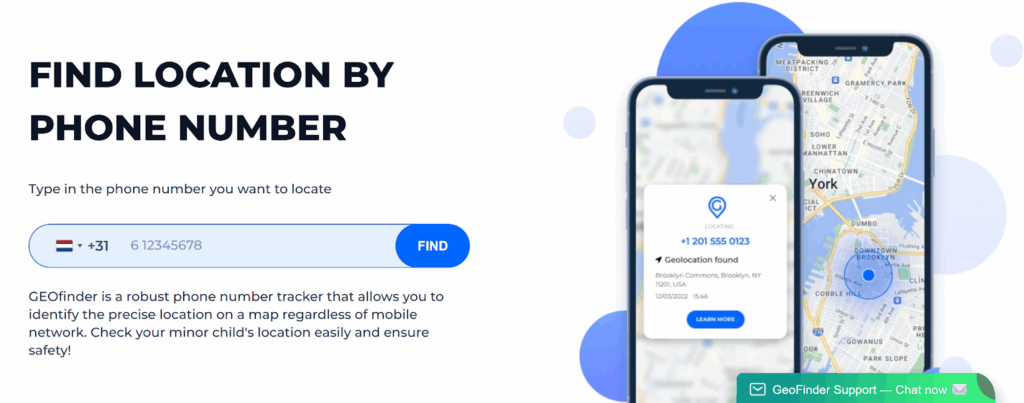
Featured image for "Name Lookup and Misinformation: Spotting False Identities in Viral Stories"
The internet moves faster than the truth. Viral news, trending posts, and social media scandals often feature people whose names gain instant attention, but not all those names belong to real individuals. Fake identities and impersonated profiles are now key tools in spreading misinformation.
In this article, we will learn how to use a reliable name lookup, how to find details of a person by name in viral stories, and how a free reverse phone lookup with name search can help confirm whether a viral source is authentic or artificially created.
The Role of Names in Misinformation
Every viral post has a name attached, whether it’s a “whistleblower,” a “witness,” or an alleged “victim.” These names give credibility to stories, even if they’re invented. A believable name combined with a profile photo is often enough to make people trust what they see online.
Misinformation creators exploit this by using fake or stolen identities. They combine parts of real people’s data, such as names, photos, or job titles, to form composite profiles that look authentic.
When such content spreads, users start searching for how to find a person by name to confirm whether the identity is real. This is where proper verification becomes vital.
Why Verifying a Name Matters
A simple name search can reveal whether an identity actually exists or if it’s artificially constructed. It’s not just about curiosity; it’s about protecting yourself and others from manipulation.
Why name verification is crucial:
- Preventing misinformation: Confirming if a name belongs to a real person can stop the spread of false narratives.
- Protecting against scams: Many fake profiles use stolen names to appear legitimate.
- Ensuring credibility: Journalists, researchers, and readers can verify sources before citing or sharing.
- Identifying digital impersonation: A name lookup can reveal duplicate or suspicious accounts using the same photo or alias.
How to Find a Person by Name: Step-by-Step Verification
To determine whether a person featured in a viral story is real, follow these steps.
1. Start With a Basic Search
Type the full name in quotation marks (e.g., “Lily Coorter”) in Google or Bing.
- Check whether the person has consistent appearances across different sources.
- Compare photos: are the same images showing up under multiple unrelated names?
- Note where the name appears in news outlets, social media, or unknown blogs.
If you find nothing or only identical text snippets, it’s a sign that the profile might be fabricated.
2. Search Social and Professional Platforms
Most real users leave some trace online, even minimal ones.
- Try LinkedIn for career and education details.
- Search Facebook or Instagram for regional tags, mutual connections, or past activity.
- Use Twitter (X) to see if the account history aligns with the claimed timeline.
A fake profile usually lacks depth; it might have only a few posts, no replies, and minimal interaction.
3. Use Trusted Tools for a Comprehensive Name Lookup

A reliable way to cross-verify is through GEOfinder, which organises publicly available information linked to a name.
When you try to find a person by name with GEOfinder, you can discover:
- Mentions in public directories, news, or professional sites.
- Regions where the name appears most frequently.
- Possible linked profiles or usernames.
- Connections between a name and email handle or phone number.
This structured name lookup helps you confirm if the person exists and operates within legitimate networks. It doesn’t reveal private information, only what’s already available online, helping separate real individuals from manufactured ones.
4. Try a Free Reverse Phone Lookup with Name
Sometimes misinformation includes screenshots or “messages” allegedly from real people. A free reverse phone lookup with name tool can help check whether the phone number matches any known public identity.
If the phone number leads nowhere or shows conflicting names across listings, the account might be fake. Pairing a reverse lookup with GEOfinder or similar databases provides even stronger verification.
5. Cross-Check Regional or Institutional Records
Many fabricated profiles claim ties to organisations, universities, or government offices.
Search those institutions directly:
- Visit the official staff or alumni pages.
- Look for published directories or employee lists.
- Search archived pages (using the Wayback Machine) to check if the name ever appeared there.
If there’s no trace of that person on official channels, the name is likely used falsely.
Common Signs of a Fake or Misused Identity
When verifying a name, look for inconsistencies that suggest the identity might not be real.
Red flags include:
- Recycled photos – one image appearing under multiple unrelated names.
- Mismatched timelines – a profile claiming activity years before the account was created.
- Overly generic bios – vague job titles, missing details, or identical “About” sections.
- Excessive engagement – sudden spikes in followers or reposts despite no history.
- Missing regional details – no evidence of the person’s existence in local or official databases.
Combining GEOfinder name lookup results with manual searches can quickly expose these discrepancies.
How Misinformation Networks Exploit Real Names
Not all fake profiles are entirely fabricated. Sometimes, real names are used without permission to make a false story sound credible.
- A scammer may attach a genuine LinkedIn photo to a fake news account.
- A political troll might reuse an inactive person’s name for propaganda.
- Fraud networks often replicate real names with small spelling changes to appear authentic.
By using how to find details of a person by name, you can spot these manipulations, especially when two or more profiles claim the same name and image but have different histories.
Verdict
In the era of viral misinformation, anyone can become a “source” overnight, whether they exist or not. Learning how to find a person by name, confirm their authenticity, and analyze what data supports their identity is an essential modern skill.
By combining basic search techniques, social verification, and tools like GEOfinder name lookup, users can detect fake profiles, prevent rumor-based sharing, and promote credible information.
Anna leverages her expertise in AI and marketing to craft engaging, impactful content that resonates with audiences and drives results.
View all articles





